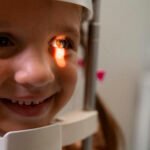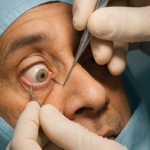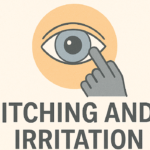Divergent squint (exotropia)
This is possibly the commonest form of squint that we encounter in our practice. Most of the time it is innocuous and only a cosmetic problem. But sometimes it can reduce the vision when one has to take treatment as soon as possible. It can occur in various forms – it could be intermittent or alternating or sensory.
An intermittent divergent squint is when one eye remains fixated on a target while the other eye drifts outward some of the time. As the name suggests, this deviation is not constant. The frequency at which an intermittent exotropia can deviate can vary, making it difficult to catch in a vision screening in some cases. The magnitude of the deviation can also vary and may not be obvious initially. Symptoms associated with intermittent exotropia can be double vision, squinting in bright sunlight, covering/closing an eye, blurry vision, poor reading fluency, etc.
An alternating divergent squint is an outward eye deviation that can be seen in either eye. It can be constant or intermittent and can have a varying magnitude (some are big, and some are small). In some cases of constant alternating exotropia, the individual with the deviation can switch focus between their eyes without changing the ocular posture. These people will have a greater peripheral field of vision. Symptoms associated with an alternating exotropia can be the same as an intermittent exotropia, but they may also be asymptomatic. In long-standing deviations, there is likely to be suppression.
BEFORE SURGERY AND AFTER SURGERY PICTURES OF DIVERGENT SQUINT
The third common form of exotropia is sensory divergent squint where there is poor vision in one eye. When one eye does not see clearly either due to the presence of corneal opacity or cataracts or problems in the retina or macula, the eye begins to deviate as it is lacking visual input from the macula. These deviations can be more cosmetically noticeable. Surgery can be conducted to assist with cosmesis, but the eye may rarely drift back following the procedure because the lack of visual input may still be present. However, the deviation which recurs can be minimized to a great extent by modifications in surgery.
Treatment options vary depending on the condition. Surgery is considered successful and may need additional support in the form of vision therapy, prisms, or corrective lenses. Surgery may not cure all the cases but the control over the deviation will improve. It is always best to seek a consultation and eye examination when the child is still growing as this will help to identify the nature of the squint and enable remedial measures.
In case of any queries please seek an appointment with Dr. Ramesh Murthy who is one of the best squint surgeons in Pune and is available at Axis Eye Clinic which is one of the best eye clinics in Pune.






